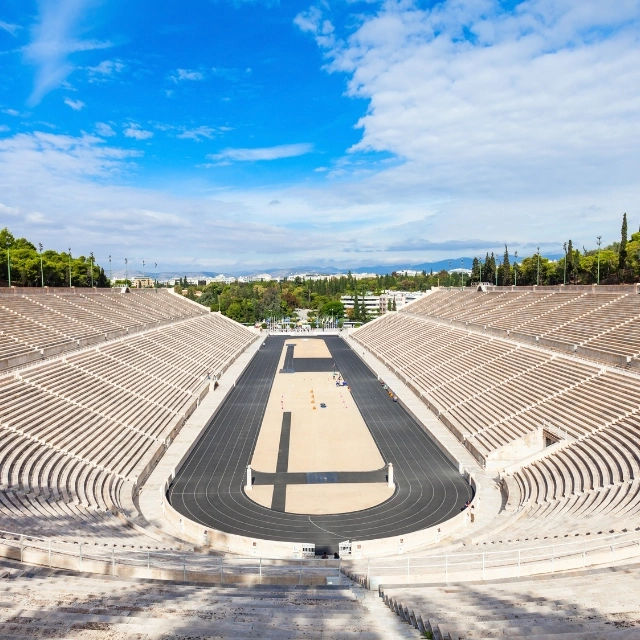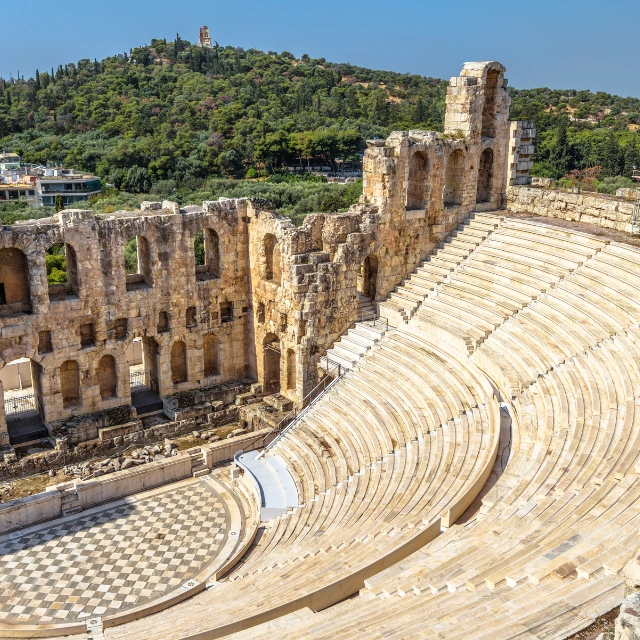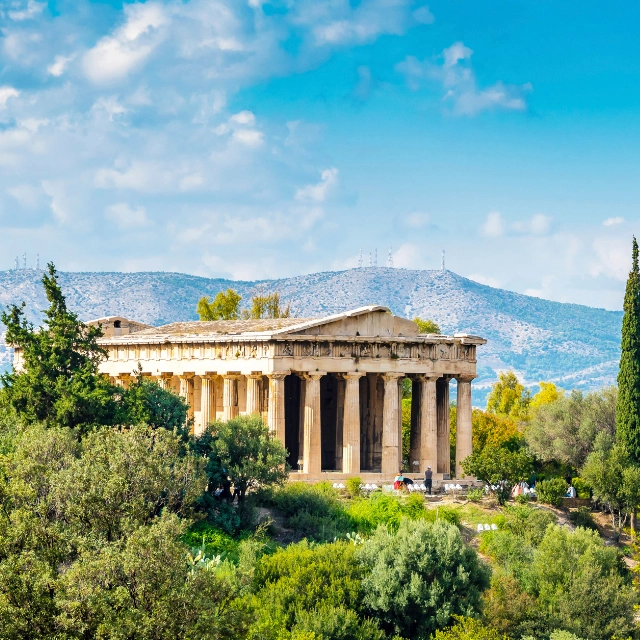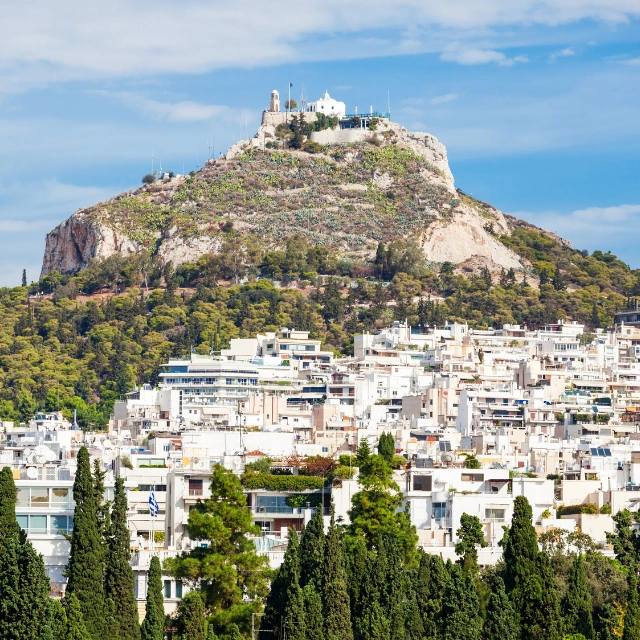Piraeus (Athens), Greece
Athens, the capital of Greece and one of the busiest cities in Europe, is a hub of history spanning over 5,000 years. The city is a marvel at night, with its ancient ruins reflecting light that can be seen from a distance. Travelers from all corners of the globe flock to Athens on cruises to experience its rich history. Athens’ art, theatre, architecture, and philosophy have had a profound impact on entire civilizations.
Taking a cruise from Athens offers timeless excursions through thousands of years of history. Piraeus, the bustling departure port, is one of the busiest commercial ports globally, offering many Mediterranean cruises. The port is situated on a natural, sandy bay, where locals often unwind on summer weekends. Travelers can explore, shop, and sample traditional Greek dishes while stopping over on their Greek island cruises from Athens.
No Greek island cruise from Athens is complete without exploring the city’s major sites, including the unforgettable Acropolis, the Parthenon, a hike up Mount Lycabettus, or tours of museums containing antiquity’s greatest treasures dating back to the 5th century BC. Athens is a city of ruins that embodies the very essence of modern Greece.
Exploring Sights and Things to Do

The Acropolis
While there are many more acropoleis (the plural of “acropolis,” in case you’re wondering) in Greece, it’s this one in central Athens that garners the most attention. In fact, it’s routinely referred to simply as “The Acropolis.” The site is an elevated, flat-topped rock with an assortment of monuments and ruins built between 510 and 400 B.C., including the Parthenon, the Temple of Athena Nike and the Erechtheion. Travelers say the hike to the Acropolis is just as memorable as the sites it holds.
The Parthenon
An impressive example of ancient Greek architecture, the Parthenon is a cultural landmark like no other. It once served as a treasury and at another point housed a Christian church. Now, the Parthenon is a must-see sight and the unchallenged highlight of visiting the Acropolis (and for some, Greece in general).


Olympic Stadium
The Olympic Games were born in Athens, making it a significant event celebrated worldwide to promote cultural exchange and peace among nations. The modern Olympic Games have been held in Athens four times, in 1896, 1906, 2004, and most recently, the Special Olympics in 2011. The Panathenaic Stadium, an outdoor stadium that seats 45,000 people, is a prominent landmark located in the heart of Athens.
Herod Atticus Odeon
Situated on the south slope of the Acropolis, the Herod Atticus Odeon was named after Tiberius Claudius Herod Atticus, a wealthy Athenian who sponsored the building of this ancient outdoor auditorium between A.D. 160 and 174. Historically, the venue hosted a variety of music festivals, but today, the locale serves as the site for many theater, music and art festivals, including the Athens & Epidaurus Festival.


Plaka District
The neighborhood of Plaka encircles the Acropolis and is a delightful place to explore with its quaint, winding streets that lead to artisanal stores, eateries, numerous coffee shops, and bars. Initially, in the 1970s, the area was the go-to spot for revelers, but due to stricter noise regulations, it has become a more serene and commercialized locality. Consequently, the district has witnessed an upswing in the number of shops and restaurants, and it has now become a favored destination among tourists who seek leisure and shopping opportunities.
Temple of Hephaestus
One of central Athens’ best preserved ruins is the Temple of Hephaestus. Nestled within Ancient Agora, this site was built between 460 and 420 B.C. and once served as a Christian church. Eventually, the building was transformed into an archaeological museum before undergoing excavations in 1930 and later opening to tourists.


Ancient Agora
The agoras of the ancient Greek city-states were open areas for people to assemble for anything from military purposes to political or commercial ones. Ancient Agora is the most popular of its kind, thanks in part to its historical significance. Socrates used to lecture here, and it was also here that Saint Paul sought out converts for the then-fledgling religion known as Christianity.
Mount Lycabettus
The city of Athens boasts of its hilly and undulating terrain, with Mount Lycabettus being the highest peak towering over 900 feet above sea level. Reaching the summit is an exciting journey that involves taking a cable car that ascends towards the mountaintop, followed by a climb of around 100 steps from the cable car station to the peak. Once you reach the top, the terrace overlooking Mount Lycabettus offers stunning panoramic views of Athens and the port of Piraeus, along with its numerous docked ships. It’s an experience that promises to leave you breathless and captivated.

Discover More About Piraeus (Athens)
Port Facilities & Location
If you’re looking to embark on a Greek island cruise departing from Athens, you’ll be pleased to know that the port of Piraeus has got you covered. As one of the most well-serviced ports globally, it offers three large cruise terminals (Terminal A, B, and C). Each terminal comes equipped with air conditioning, free Wifi, and restrooms to ensure that you have a comfortable experience. Our ship will be docked at Terminal B.
When it comes to getting to Athens from the terminals, you have two options: take a taxi, available from every terminal gate, for a 20-30 minute ride to Athens, or you can take a subway train from Piraeus.
Explore Places to Eat and Drink
Looking for the best food and drinks near the Athens (Piraeus) Cruise Port? Look no further than Varoulko in Piraeus. This Michelin-rated restaurant is known for its expertly cooked fresh seafood dishes and main courses, such as white fish served with zucchini cream and horseradish, cuttlefish risotto, and delicious leek soup.
For a taste of traditional Greek cuisine, head over to Strofi in Athens. This restaurant has been open since 1957 and is located just steps from the Acropolis. Try their lamb stuffed with cheese and wrapped in vine leaves, or their octopus with olive oil and oregano. Enjoy the outdoor dining area with stunning views of the Acropolis in the distance.
If you’re looking for a restaurant with a view, Orizontes in Athens is the place to go. Located on Mount Lycabettus, the highest peak in Athens, Orizontes offers breathtaking views of the city. Come for the homemade bread, extensive wine list, and classic Mediterranean lamb and fish dishes.
Finally, for all you bread lovers out there, Mama Psomi in Athens is a must-visit. This family-owned bakery offers a variety of bread, including bulgur wheat and walnut bread, as well as pies with sweet fillings. Make sure to stop by and quickly devour these delicious treats.
Culture & History
Athens, the capital city of Greece, has a long and rich history dating back to the Neolithic period. The Acropolis, a hill overlooking the city, has played an important role in the city’s growth and development. In the 6th century BCE, Athens underwent a period of cultural and geographic expansion, resulting in the construction of new structures and sculptures to replace earlier ones. This transformation made the Acropolis a symbol of Athens. In the 5th century BCE, Athens became the first democratic city-state in the world, and this innovation had far-reaching effects on history.
Athens continued to flourish during the Roman and Hellenistic periods, becoming a hub for trade and commerce. During this time, the city produced and shipped a great variety of goods, including oils, to Italy. Emperor Hadrian, one of the most powerful Roman emperors, had a particular fondness for Athens and built Hadrian’s Library on the north side of the Acropolis in 132 AD. However, with the decline of the Roman Empire, Greece’s global importance diminished, and Athens, like many other parts of Greece, passed through many hands.
In the 19th century, Athens became the capital of the kingdom of Greece, and the Turks, who had possessed the Acropolis, finally relinquished it. Despite its turbulent past, Athens has preserved its historical and cultural landmarks, which continue to inspire and educate people around the world. The spirit of Greece, with its pioneering and resilient nature, has been a source of inspiration for numerous political structures around the world, including the United States of America. To experience the rich history of Athens for yourself, you can choose from a variety of guided tours or visit its unparalleled museums.
Shop 'Til You Drop
Piraeus port boasts an abundance of shopping opportunities, offering a chance to grab a quick souvenir during your visit. Stroll down Sotiros Dios, a charming pedestrian shopping street, and you will find a diverse array of shops, ranging from popular name-brand stores to smaller, locally owned boutiques. Alongside these shops, you can also find cozy cafes and unpretentious restaurants to take a break and savor some local cuisine.
Getting around
If you’re planning to explore Athens (Piraeus), the city offers several modes of transportation to get around. Public transport is a convenient and affordable option to navigate the city. The subway station is located at the northern part of the Piraeus port gate, and it operates on the Green, Red, and Blue lines, depending on your destination. The ticket prices range from €1 for a one-hour trip to €3 for a day pass.
Taxis are also easy to find in Athens (Piraeus), and they are available at every cruise terminal gate and throughout the city center. Most taxis are metered, and you can find them in areas like hotels or tourist spots such as historical sites. However, it’s important to note that most taxis don’t accept credit cards, so it’s a good idea to carry extra euros with you to cover your fare. With these options, you can explore Athens (Piraeus) with ease and convenience.
Local Currency & Tipping Etiquette
When visiting Greece, it is important to know that the Euro is the main currency used for transactions. It is worth noting that many small businesses may not accept credit cards, so always check before attempting to use one. While it is not customary to tip taxi drivers in Greece, rounding up to the nearest euro is considered polite, especially if the driver was particularly helpful. Additionally, it is common to leave a 10% tip at restaurants if a service charge is not already included. Finally, if you are taking a guided tour in Athens, tipping your tour guide €5-€10 is a polite way to show your appreciation.
Weather
May 2024 Weather
Averages: 74º F high / 57º F low
Currency
Euro (EUR)
Conversion Calculator
Transportation Options
VIATOR
(airport private transfers)
Taxis are readily available.
Time Zone


